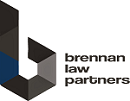Pre-Employment Screening
The obligation on schools and school leaders to protect the safety and wellbeing of students is of highest priority. A range of factors and decisions contribute to the creation and maintenance of a child-safe environment and all must be conducted effectively to adequately protect children.
One important factor that can greatly impact the child-safe environment is the suitability and effectiveness of pre-employment screening of new employees. Principals must undertake diligent pre-employment screening to ensure that any potential risks or red flags are identified and ameliorated. Failure to conduct adequate screening can expose a school or principal to liability if a staff member causes harm to a student.
What is pre-employment screening?
Schools must apply a range of pre-employment screening practices when recruiting staff. The purpose of pre-employment screening is to minimise the chance of perpetrators being employed within a school setting.
The most commonly relied upon tool for pre-employment screening is the Working With Children Check. This registration provides information that clears the applicant of any previous charges or convictions of violent offences. However, schools must look beyond a current Working with Children Check in their pre-employment screening processes as they do not provide a complete picture of potential risks (after all, many perpetrators of violence against children haven’t previously offended or been caught!). Indeed, the Child Safe Standards compel schools to take proper steps to screen human resources to reduce the risk of harm to students (Child Safe Standard 6).
What checks should be undertaken?
Pre-employment screening should take a number of forms. Principals should undertake diligent checks of available information, and test any information that may point to potential risks. Principals should look at all information provided and critically analyse that information before satisfying themselves that the applicant should be employed.
Conducting appropriate pre-employment screening typically includes the following steps.
1. Critically examine an applicant’s CV and employment history
Principals should pay close attention to an applicant’s CV and information about their employment history, with a particular view to identifying signs or facts that may alert to potential risks and require further exploration. Principals should pay particular attention to matters of unusual terminations/cessations of employment, unusual or unexplained gaps in employment and unusual attitudes towards or about children and pedagogies.
2. Conduct structured, consistent and detailed interviews
Interviews conducted with potential employees provide an opportunity for Principals to look beyond an applicant’s written application and observe their positions and responses to questions about matters of child safety and relationships. Where interviews are conducted based on value-based or behavioural interviewing techniques, Principals can directly observe a candidate’s response to these matters. The more consistent and structured an interview is, the more effective an analysis of responses can be undertaken.
Face to face interviews also provide for an opportunity for the school to discuss and explore their commitment to child safety and the expectations they have of all employees.
3. Verify the applicant’s qualifications
Principals should not simply take an applicant’s statements about their qualifications on face value. Proper checks should be done to verify this information to ensure that the candidate has been honest throughout the recruitment process and that they do in fact have the qualifications they suggest that they do.
4. Provide opportunities for employee self-disclosure
Self-disclosure opportunities are a good way for schools to put prospective staff on notice about the school’s commitment to child safety and to screen for unwanted behaviours and personalities in the employment process.
As part of the recruitment process, schools should seek information from potential employees regarding matters of criminal convictions, employment disciplinary action or allegations or concerns raised about their conduct previously.
Sure, candidates can be dishonest in these forms and fail to disclose relevant conduct. However, if they were to do so and this dishonesty is later discovered, the school would likely have strong grounds for dismissal of that employee.
5. Perform proper reference checks
Reference checks are a great way to get a better understanding of the relationships the potential employee has with colleagues and peers. Reference checks should include direct contact with past employers whereby you ask direct questions about any known risks or issues when it comes to matters of child safety. Oral feedback about a candidate is harder to fudge so Principals can get a better appreciation about the professional standing of the potential employee. Unusual pattens in the references provided also alerts a Principal to matters that may require further exploration.
It is easy to overlook the requirement for thorough pre-employment screening, particularly when schools’ ability to attract staff is currently at crisis point. However, no matter the circumstances, conducting proper checks is a necessary step towards limiting potential liability should the unfortunate situation play out. Many cases of child abuse that were explored throughout the Royal Commission included red flags that should have been picked up through the recruitment and employee screening process.
How can Brennan Law Partners assist?
If a staff member acts in a manner that places students at risk of harm and, at the time of employment, there was information that was or could have been available to the principal alerting them to the risk of harm, schools and principals may find themselves on the wrong end of litigation by aggrieved parties.
If you require assistance with reviewing and strengthening your recruitment policies and practices, we welcome you to contact us at any time.
If you have any queries relating to this brief, or require assistance to respond to something happening at your school, please contact us.






